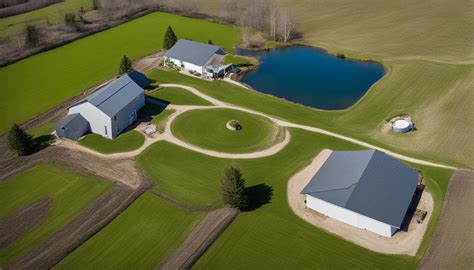Septic Tank Distance: Ensuring a Healthy Environment
Maintaining a healthy environment around your septic system is crucial for protecting groundwater, preventing unpleasant odors, and ensuring the longevity of your septic tank and drainfield. A key element of this is understanding and adhering to the proper setback distances—the minimum distances your septic system must be from various structures and features on your property. These distances vary depending on local regulations, soil conditions, and the specific components of your septic system. This comprehensive guide will explore the critical aspects of septic tank distance requirements to help you ensure a safe and healthy environment.
Why Maintaining Proper Septic Tank Distance is Essential
Improper septic tank placement can lead to several serious problems:
- Groundwater Contamination: If your septic tank is too close to a well or other water source, wastewater can leach into the groundwater, contaminating drinking water and posing a significant health risk.
- Surface Water Contamination: Similarly, inadequate distance from surface waters like streams, rivers, or lakes can lead to contamination, harming aquatic life and potentially impacting recreational areas.
- Foundation Damage: Placement too close to your home's foundation can lead to structural damage due to soil saturation and potential sewage backups.
- Odor Problems: Insufficient distance from your house or other buildings can result in unpleasant odors escaping from the septic system.
- Drainfield Failure: Improper spacing around the drainfield can hinder its ability to properly treat wastewater, leading to premature failure and costly repairs.
What Determines the Required Septic Tank Distance?
The required distance for your septic tank and drainfield varies based on several factors:
- Local Regulations: These are the most important factor. Your local health department or building codes department will have specific regulations detailing minimum distances for septic systems. These regulations often consider factors like soil type, topography, and the proximity of water sources.
- Soil Type: Permeable soils require greater distances to allow for adequate wastewater filtration. Less permeable soils may allow for slightly closer placement, but this still needs to adhere to local regulations.
- Septic System Components: The distance requirements might differ slightly depending on whether you have a traditional septic tank and drainfield system or an alternative system like a mound system or aerobic treatment unit.
- Water Sources: The distance to wells, surface waters, and drainage ditches is a major consideration, often requiring significant setbacks.
Common Questions About Septic Tank Distance
How far should a septic tank be from a house?
The distance between a septic tank and a house is dictated by local codes and varies widely. It’s typically a minimum of 10 feet, but could be significantly more. Check your local regulations to determine the exact requirement in your area.
How far should a septic tank be from a property line?
Similar to house distance, the minimum distance from a property line to your septic tank is determined by local codes. It’s crucial to check with your local authorities to understand the specific requirements for your property before installation. Failure to comply can result in fines and necessitate costly relocation.
How far should a septic drainfield be from a well?
The minimum distance between a septic drainfield and a well is a critical health and safety measure. Local regulations usually mandate a substantial distance, often exceeding 50 feet. Contact your local health department for the precise requirement applicable to your region. This distance ensures that treated wastewater doesn't contaminate your drinking water source.
What happens if my septic system is too close to a water source?
If your septic system is installed too close to a water source, it risks contaminating the water with pathogens and pollutants. This poses a serious health hazard, potentially leading to waterborne illnesses and environmental damage. It may also result in fines and necessitate the costly relocation or replacement of the system.
How can I find out the specific septic tank distance requirements for my area?
The best way to find out your local requirements is to contact your local health department or building permits office. They can provide detailed information specific to your location and soil conditions, ensuring your septic system is installed correctly and safely. They can also provide guidance on any necessary permits.
Conclusion
Understanding and adhering to the proper septic tank distance requirements is not merely a matter of following regulations; it is a critical responsibility for protecting public health and the environment. By prioritizing these distances, you safeguard water quality, prevent costly repairs, and ensure a healthier environment for yourself and your community. Always consult your local authorities for specific guidelines before installing or modifying your septic system.

